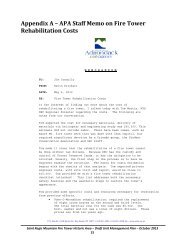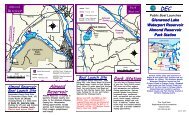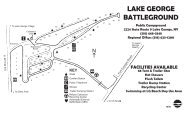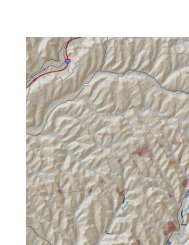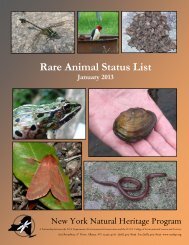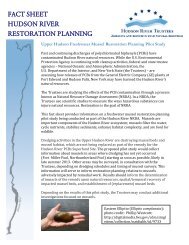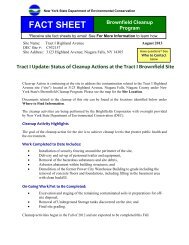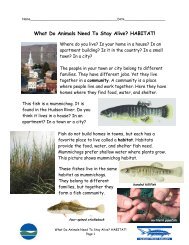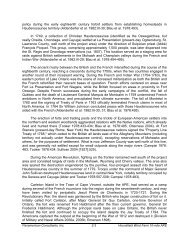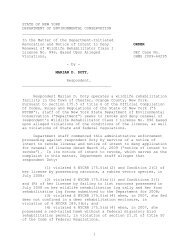Town of Brighton Smart Growth Plan - New York State Department of ...
Town of Brighton Smart Growth Plan - New York State Department of ...
Town of Brighton Smart Growth Plan - New York State Department of ...
Create successful ePaper yourself
Turn your PDF publications into a flip-book with our unique Google optimized e-Paper software.
F. X. Browne, Inc.<br />
The mapping exercises and<br />
environmental analysis components <strong>of</strong><br />
this <strong>Smart</strong> <strong>Growth</strong> <strong>Plan</strong> are intended to<br />
inform future development choices. The<br />
town has an opportunity to utilize tools<br />
that would plan for growth and<br />
development while protecting important<br />
resources and avoiding environmentallysensitive<br />
features on the landscape. In<br />
this <strong>Smart</strong> <strong>Growth</strong> <strong>Plan</strong>, the goal <strong>of</strong> this<br />
analysis is somewhat limited, and is<br />
focused on recognizing environmental<br />
benefits and natural features that serve<br />
as “green infrastructure” in the town,<br />
and to illustrate the town landscape in a<br />
new way. Opportunities for future<br />
environmental analyses include the<br />
following:<br />
Wildlife data map; full version<br />
provided in Appendix D.<br />
Field surveys: The town-scale mapping<br />
using existing ecological data is just a<br />
starting point for a serious effort to<br />
understand, locate, and determine<br />
protection measures for habitats and<br />
natural features in the <strong>Town</strong> <strong>of</strong> <strong>Brighton</strong>.<br />
This is not a substitute for on-the-ground site surveys, which would yield tremendous<br />
information, including locating sign <strong>of</strong> wildlife, wildlife’s use <strong>of</strong> habitats or potential conflict<br />
areas, such as road crossings, and high value habitats such as vernal pools or old-growth forests.<br />
The existing data used in the current analysis is not sufficiently scaled to be used for site-based<br />
determinations or detailed local land use planning.<br />
Conservation priorities: This environmental analysis has not attempted to make value judgments<br />
about which habitats and natural features are important to protect. As the <strong>Town</strong> <strong>of</strong> <strong>Brighton</strong><br />
makes decisions about the future, it will have to weigh how to prioritize environmental benefits.<br />
Some options for how to approach this include: identifying important community values as a<br />
filter for prioritization (e.g. is wildlife habitat important to the community? What about scenic<br />
resources and viewsheds?); using the uniqueness <strong>of</strong> features as key criteria; and using the quality<br />
<strong>of</strong> features as key criteria.<br />
2.4 Land Use Recommendations<br />
Many tools exist that can help <strong>Brighton</strong> protect features that are important to the community.<br />
Some <strong>of</strong> these are dependent upon engaging in local land use planning; others are not. Some<br />
steps that would help in protecting environmental features include:<br />
<strong>Brighton</strong> <strong>Smart</strong> <strong>Growth</strong> <strong>Plan</strong> 17<br />
July 2009



